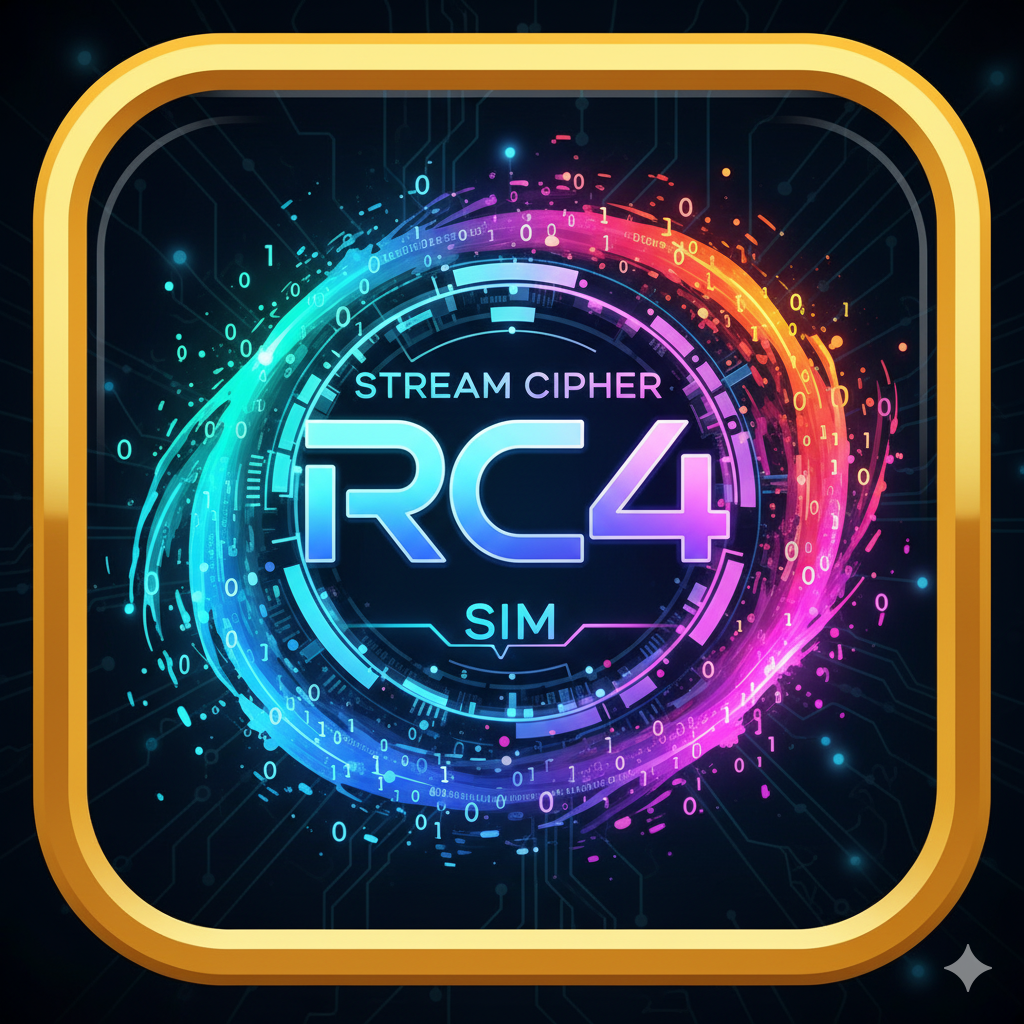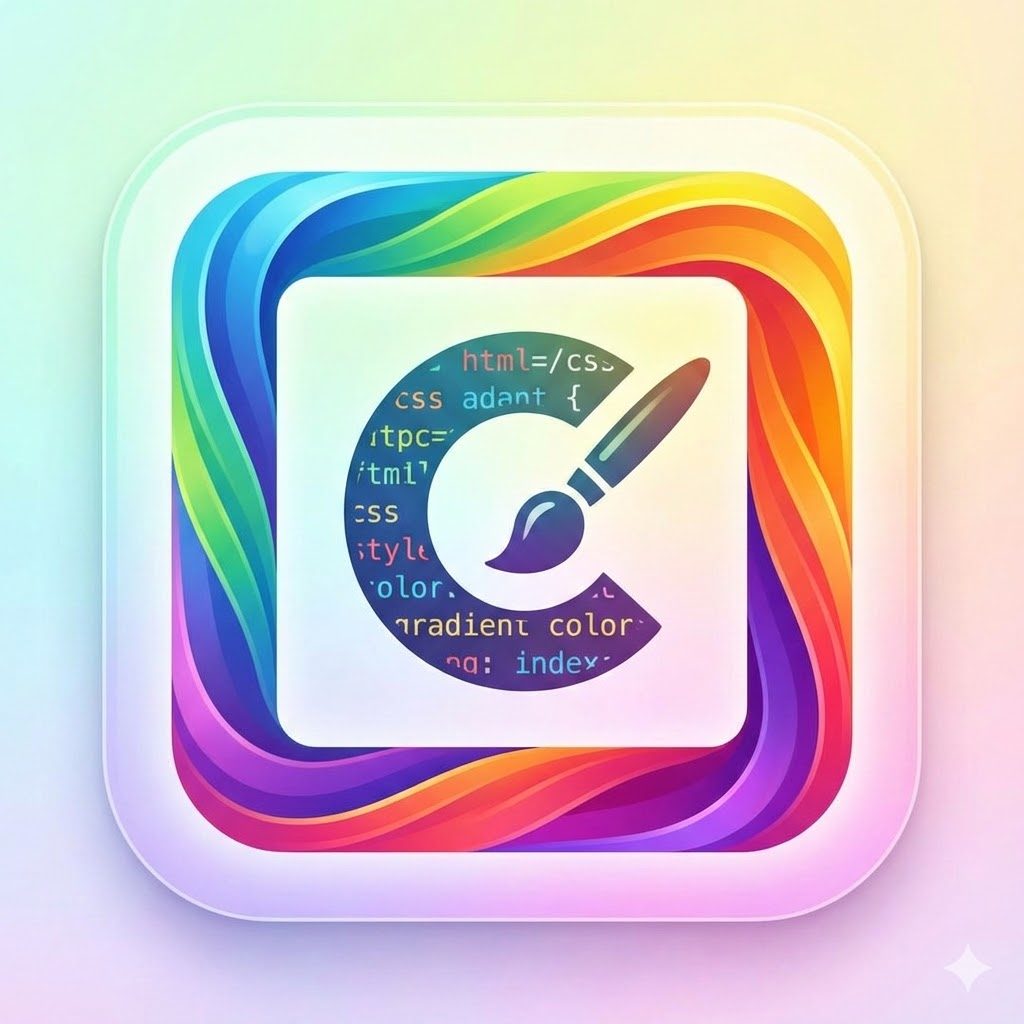Stream Cipher RC4 Sim
Encrypt and decrypt messages with the RC4 stream cipher. Online RC4 simulator for educational purposes and quick security checks.
The Stream Cipher RC4 Simulator Tool 🧠✨ brings to life one of the most influential and widely used stream ciphers in the history of modern cryptography — RC4 (Rivest Cipher 4).
Invented by Ron Rivest in 1987 for RSA Security, RC4 became a cornerstone of early web and network encryption, protecting billions of communications in protocols like SSL/TLS, WEP, and Microsoft RDP. Though now deprecated due to vulnerabilities, its simplicity and elegant design still make RC4 one of the best tools for learning how stream ciphers work — and this simulator turns that theory into a vivid, hands-on experience.
With the Stream Cipher RC4 Sim, you can generate keys, visualize the key-scheduling and pseudo-random generation algorithms, and encrypt or decrypt text in real time, all within your browser.
⚙️ Key Features:
🔑 Key Scheduling Algorithm (KSA) Visualization:
Watch how RC4 initializes its 256-byte state array (S-box) using your secret key — one step at a time, with full visual feedback.🔁 Pseudo-Random Generation Algorithm (PRGA):
See how the S-box evolves during encryption, generating the key stream byte-by-byte, and XORing it with your plaintext to create ciphertext.🔢 Real-Time XOR Encryption & Decryption:
Type or paste your plaintext and instantly view the ciphertext in ASCII, binary, or hexadecimal — using RC4’s reversible XOR process.🎲 Custom or Random Key Generation:
Enter your own secret key or let the tool generate a random one for testing secure key distribution.🧮 Step-by-Step Animation:
Toggle slow-motion mode to observe how each iteration updates indices i and j, swaps bytes, and outputs keystream values.🔍 Interactive Byte State Table:
View the evolving 256-byte S-array as color-coded cells, showing swaps and stream output in real time.🧩 Flexible Input Options:
Supports text, hexadecimal, or binary inputs — ideal for technical cryptanalysis or academic demonstrations.🧠 Symmetric Encryption Demo:
The same process decrypts as encrypts:💾 Export Key Streams:
Save generated keystreams or ciphertext for deeper analysis or side-channel attack simulations.📚 Learning Mode (Algorithm Explained):
Built-in explanations for each RC4 stage — including KSA, PRGA, and XOR logic — with diagrams and pseudocode.
💡 How It Works (Simplified):
RC4 operates as a stream cipher — it encrypts data one byte at a time using a keystream derived from a pseudo-random permutation of bytes.
Key Scheduling Algorithm (KSA)
RC4 initializes an array S of 256 bytes (0–255).
A secret key (between 1–256 bytes) scrambles S through modular swaps.
Example (pseudocode):
Pseudo-Random Generation Algorithm (PRGA)
Once S is mixed, RC4 uses two counters (i, j) to generate pseudo-random bytes that form the keystream.
Each keystream byte is XORed with plaintext to produce ciphertext.
Reversibility
Because XOR is its own inverse, decrypting ciphertext with the same keystream returns the original plaintext — a hallmark of symmetric encryption.
🧭 Historical Context:
RC4 was the dominant stream cipher of the 1990s and 2000s, used in:
🔒 WEP (Wired Equivalent Privacy) for Wi-Fi encryption.
🌐 SSL/TLS (Secure Socket Layer) for web security.
📧 Microsoft Outlook & RDP for secure communication.
However, due to key scheduling biases and state leakage vulnerabilities, RC4 was formally deprecated in modern protocols like TLS 1.3 and HTTPS.
Despite this, it remains a foundational cipher for cryptographic education, influencing later designs like Salsa20, ChaCha20, and HC-128.
🌍 Perfect For:
🧑🏫 Teachers & Students: Demonstrate encryption principles, byte substitution, and XOR logic visually.
🧮 Cryptography Learners: Understand how stream ciphers differ from block ciphers like AES.
💻 Developers: Study RC4 mechanics for historical understanding and algorithmic experimentation.
🕵️♂️ Security Researchers: Explore key bias and statistical vulnerabilities for educational research.
🧩 Puzzle & CTF Creators: Generate realistic RC4-style challenges and forensic exercises.
🔍 Why It’s Valuable:
The Stream Cipher RC4 Simulator bridges classical encryption and modern cryptanalysis, helping users understand not just how RC4 works, but why it eventually failed — a crucial lesson in algorithmic transparency and design evolution.
It demonstrates:
✅ The simplicity and elegance of XOR-based keystream encryption.
✅ The importance of unbiased randomness in cryptographic design.
✅ The historical pathway from RC4 → modern ciphers like ChaCha20.
This tool turns RC4 into a visual cryptographic lab, perfect for both education and research.
✨ In Short:
The Stream Cipher RC4 Simulator 💻🔐 transforms an iconic encryption system into an interactive learning experience. It lets you generate keys, visualize swaps, and watch encryption happen in real time — revealing how one of the simplest algorithms changed digital security forever.
Encrypt. XOR. Visualize.
With the Stream Cipher RC4 Simulator, you’ll master the inner workings of stream ciphers — from byte swaps to keystreams — one step at a time. ⚡🔢






